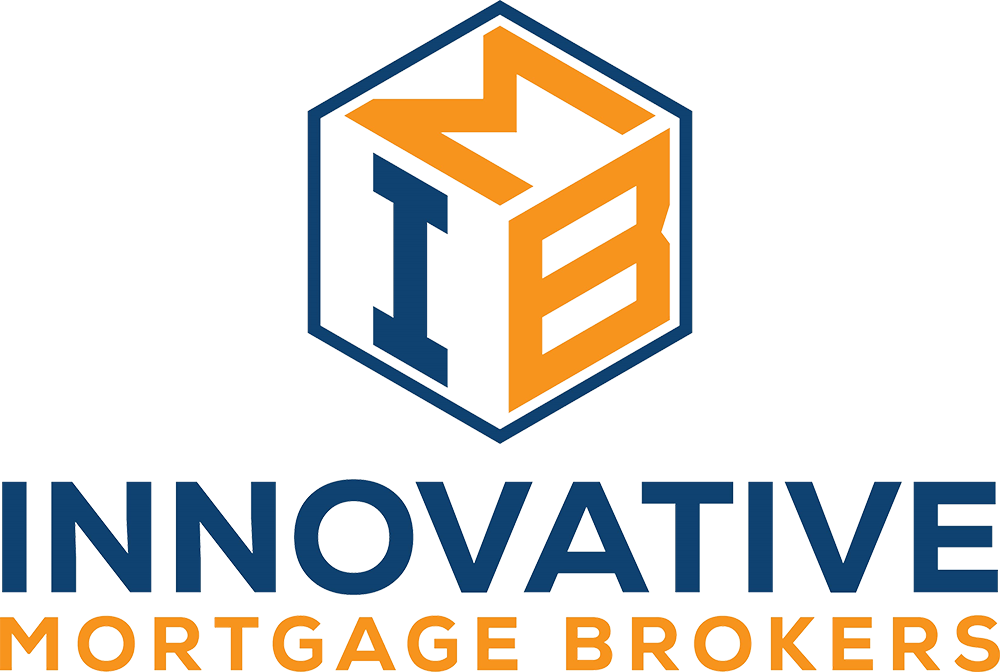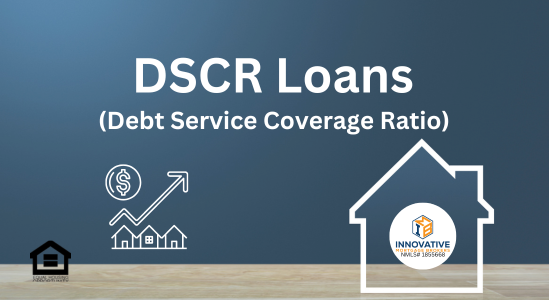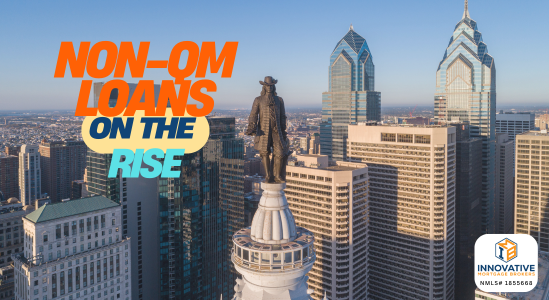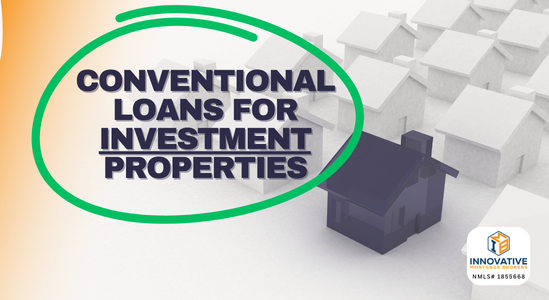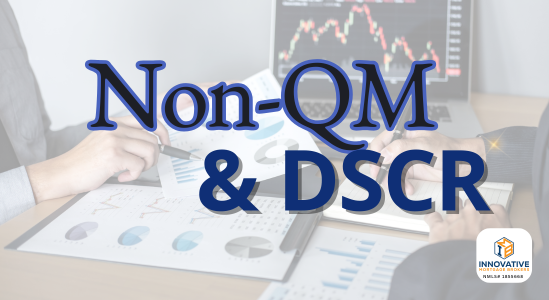What You Need to Know About These Flexible Financing Options In today’s shifting housing market,…
DSCR Non-QM Loans in PA: Your Guide to No Doc Loans and Mortgages for Pennsylvania
Navigating the world of mortgages can be daunting, especially when traditional loan options don’t quite fit your unique financial situation. This is where DSCR (Debt Service Coverage Ratio) Non-QM (Non-Qualified Mortgage) loans come into play. These loans offer an alternative route for investors and self-employed individuals who may struggle to meet the rigid requirements of conventional or FHA mortgages. In this article, we’ll explore DSCR Non-QM loans, often referred to as no doc loans or no doc mortgages and clarify what makes them a viable option for many borrowers.
What Are DSCR Loans
DSCR is a type of a Non-QM loan, and are designed for borrowers who may not qualify for traditional mortgages due to non-traditional income sources. They are for investment properties only. Unlike conventional loans, which require extensive documentation of income, employment, and credit history, DSCR loans focus on the income generated by the property itself. This means that your eligibility for the loan is determined by the property’s ability to generate enough income to cover the loan payments, rather than your personal income.
The Myth of the No Doc Loan
The term “no doc loan” or “no doc mortgage” can be misleading. While it suggests that no documentation is required, this isn’t entirely accurate. Lenders will still require documentation, but the focus shifts from personal income verification to other forms of documentation. For DSCR loans, the primary documentation needed is proof of the property’s income, such as lease agreements or rental income statements.
Why Choose a DSCR Loan?
- Flexible Qualification Criteria: Traditional loans often require a steady employment, and verifiable income. DSCR loans on the other hand, are more flexible. They are ideal for real estate investors, self-employed individuals, or those with complex financial situations.
- Focus on Property Income: The primary criterion for DSCR loans is the property’s ability to generate sufficient income to cover the loan payments. This makes it easier for investors to qualify, as the loan is based on the property’s performance rather than personal income.
- Streamlined Process: Without the need for extensive personal income verification, the loan approval process can be quicker and less cumbersome. This is particularly beneficial for investors looking to capitalize on time-sensitive opportunities.
Understanding DSCR
The Debt Service Coverage Ratio (DSCR) is a critical metric used by lenders to determine the loan’s viability. It is calculated by dividing the property’s net operating income (NOI) by the total debt service (the loan’s annual payments).
For example:
- If a property generates $120,000 in net operating income annually and the loan payments amount to $100,000 annually, the DSCR would be 1.2.
- A DSCR of 1.0 means the property generates just enough income to cover the loan payments, while a DSCR above 1.0 indicates a cushion of income over debt, making the loan less risky for the lender.
Who Can Benefit from DSCR Non-QM Loans?
- Real Estate Investors: These loans are particularly beneficial for investors who own multiple properties and rely on rental income. Traditional loans may not consider rental income adequately, whereas DSCR Non-QM loans are tailored for such scenarios.
- Self-Employed Individuals: Self-employed borrowers often have fluctuating incomes and complex financial statements. DSCR Non-QM loans provide a solution by focusing on the income generated by the property rather than the borrower’s personal income.
- Foreign Nationals: These loans are also suitable for foreign nationals who may not have established credit histories in the U.S. but own income-generating properties or looking to buy one.
Detailed Process of Securing a DSCR Loan
Step 1: Property Income Evaluation
The first step in securing a DSCR Non-QM loan is evaluating the income potential of the property you wish to finance. This involves gathering and presenting documentation that proves the property’s ability to generate income. Key documents include:
- Lease Agreements: If the property is currently rented, lease agreements provide concrete evidence of the income stream.
- Rental Income Statements: These statements detail the income generated from the property over a specific period, showing its profitability.
- Operating Expense Reports: These reports outline the costs associated with running the property, helping to determine the net operating income (NOI).
Step 2: DSCR Calculation
Based on the provided documentation, the lender calculates the Debt Service Coverage Ratio (DSCR). This calculation is crucial in determining whether the property generates enough income to cover the loan payments.
- Net Operating Income (NOI): This is the income generated by the property after deducting operating expenses.
- Total Debt Service: This includes the loan’s annual payments (both principal and interest) and tax and insurance.
The DSCR is then calculated by dividing the NOI by the total debt service. A DSCR of 1.2 or higher is generally considered favorable by lenders, indicating that the property generates 20% more income than required to cover the debt service.
Step 3: Loan Approval
If the DSCR meets the lender’s criteria, the loan application proceeds to the approval stage. During this phase, the lender may also consider:
- Property Condition: The property’s physical condition and maintenance history.
- Location: The property’s location and its potential for future income generation.
- Borrower’s Credit Profile: While the focus is on the property’s income, lenders will also review the borrower’s credit health to assess risk.
Step 4: Closing
Once the loan is approved, the process moves to closing. During closing, final documents are signed, and the loan funds are disbursed. The borrower officially takes on the loan, and the property serves as collateral.
Common Misconceptions About DSCR Non-QM Loans
- No Documentation Needed: While these loans are often referred to as “no doc” loans, documentation is still required. The focus is on the property’s income rather than the borrower’s personal income, but thorough documentation of rental income and property expenses is essential.
- Higher Risk: Some may perceive Non-QM loans as higher risk due to their flexible criteria. However, the DSCR requirement ensures that the property can cover the loan payments, mitigating risk for both the borrower and the lender.
- Higher Interest Rates: While it’s true that Non-QM loans may come with slightly higher interest rates compared to conventional loans, the rates are competitive and reflect the flexibility and benefits these loans offer.
Advantages of DSCR Non-QM Loans
- Tailored for Investors: These loans are designed with real estate investors in mind, focusing on the income potential of the property rather than the borrower’s personal income. This makes it easier for investors to expand their portfolios.
- Flexible Underwriting: The flexible underwriting criteria allow borrowers with unique financial situations, such as fluctuating incomes or lack of traditional employment, to qualify for loans.
- Quick Approval Process: The streamlined documentation process can lead to quicker approval times, which is advantageous for investors looking to seize timely opportunities in the real estate market.
Potential Challenges
- Detailed Documentation Required: While personal income documentation is minimized, borrowers must still provide detailed documentation of the property’s income and expenses.
- Higher Down Payments: DSCR Non-QM loans may require higher down payments compared to conventional loans, as a way to offset the increased risk for the lender.
- Interest Rates: The interest rates on Non-QM loans can be higher than traditional loans, reflecting the flexibility and broader eligibility criteria.
About Us
At Innovative Mortgage Brokers, we understand that every borrower is unique, and so are their financial situations. With many years of experience in the mortgage industry, we specialize in helping clients secure the competitive loan options available, including DSCR Non-QM loans. Our team is dedicated to providing personalized service and expert guidance throughout the mortgage process.
We believe in simplifying the mortgage experience, especially for those with unconventional income streams, such as real estate investors and self-employed individuals. Our focus is on making the mortgage process faster, easier, and more affordable, ensuring that our clients can achieve their real estate goals without unnecessary stress.
Located in Philadelphia, we proudly serve clients throughout Pennsylvania and Florida. Our deep knowledge of the local markets, coupled with our commitment to excellence, makes us a trusted partner in your mortgage journey.
If you have any questions or need personalized advice about DSCR Non-QM loans or any other mortgage products, don’t hesitate to reach out. We’re here to help you navigate the complexities of the mortgage world with confidence.
Conclusion
DSCR Non-QM loans, often termed as no doc loans or no doc mortgages, provide a valuable alternative for borrowers who may not fit the traditional mold. By focusing on the income generated by the property rather than the borrower’s personal income, these loans offer flexibility and opportunities for real estate investors, self-employed individuals, and foreign nationals.
While the term “no doc” might suggest minimal paperwork, it’s essential to understand that lenders still require comprehensive documentation related to the property’s income and borrowers credit. The key difference lies in the source of income verification, making DSCR Non-QM loans a practical and accessible option for many.
If you’re considering investing in real estate or exploring mortgage options beyond conventional loans, DSCR Non-QM loans could be the solution you need.
